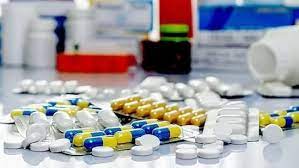The Imperative of Contamination-Free Medical Deliveries
In the world of healthcare, the delivery of medical supplies, specimens, and medications is a critical operation that demands the highest standards of care and precision. The risk of contamination, whether through environmental factors, handling, or transportation, can have dire consequences. It is not just about maintaining the integrity of the delivered items but also about safeguarding the health of patients and medical personnel. This article explores the best practices in medical deliveries, emphasizing the importance of zero contamination in this sensitive and vital aspect of healthcare.
The challenge of ensuring contamination-free deliveries is multifaceted. It involves stringent protocols right from the point of collection to the final delivery. This includes the handling of items, the conditions of transport, and the procedures followed by the delivery personnel. The stakes are high, as even minor lapses can lead to contamination, potentially compromising patient safety and treatment efficacy.
Moreover, the scope of medical deliveries is vast and varied. From transporting sensitive medical specimens to delivering critical medications and blood products, each type of delivery presents its unique challenges and requirements. This diversity necessitates a comprehensive approach, tailored to the specific needs of each item being transported.
Understanding these challenges and requirements is the first step in ensuring zero contamination in medical deliveries. As we delve deeper into the best practices, it becomes evident that achieving this goal requires a combination of advanced technology, rigorous training, and strict adherence to protocols. The following sections will explore these aspects in detail, providing insights into how medical deliveries can maintain the highest standards of safety and reliability.
The Role of Advanced Packaging in Preventing Contamination
One of the primary defenses against contamination in medical deliveries is advanced packaging solutions. The right packaging not only protects the contents from external contaminants but also maintains the required environmental conditions, such as temperature and humidity. This is particularly crucial for sensitive items like biological specimens, organs for transplant, and certain medications.
Innovative packaging technologies have emerged to meet these challenges. These include biologically safe materials, tamper-evident seals, and temperature-controlled containers. Such packaging is designed to withstand various transportation conditions, from vibrations and shocks to temperature fluctuations, ensuring the integrity of the contents throughout their journey.
Moreover, the packaging must be compliant with regulatory standards. This compliance is not just a legal requirement but also a guarantee of safety and quality. It involves using materials and designs that are approved for medical use, ensuring that they do not react with the contents or compromise their sterility.
The role of packaging extends beyond just physical protection. It also involves clear labeling and documentation. This ensures that the contents are correctly identified, handled, and processed upon arrival. Proper labeling is crucial in avoiding mix-ups and errors, which can be catastrophic in medical settings.
In summary, advanced packaging plays a critical role in preventing contamination in medical deliveries. It is a multifaceted approach that combines physical protection, regulatory compliance, and clear communication. As we move towards more sophisticated medical treatments and diagnostics, the importance of innovative packaging solutions in medical logistics cannot be overstated.
Stringent Handling Protocols: Key to Contamination Prevention
The handling of medical items during transportation is a critical aspect of preventing contamination. This involves a set of stringent protocols that govern how items are picked up, transported, and delivered. These protocols are designed to minimize human contact with the items and protect them from environmental contaminants.
Firstly, the personnel involved in medical deliveries must be thoroughly trained in handling protocols. This training includes understanding the nature of the items they are transporting, the risks associated with contamination, and the procedures for safe handling. For instance, couriers handling biohazardous materials must be equipped with the knowledge and tools to handle these materials safely.
In addition to training, the use of protective gear is essential. This may include gloves, masks, and gowns, depending on the nature of the items being transported. The use of such gear not only protects the items from contamination but also safeguards the couriers from potential exposure to harmful substances.
The handling protocols also extend to the transportation environment. Vehicles used for medical deliveries should be regularly sanitized and equipped with the necessary features to maintain a contamination-free environment. This includes air filtration systems, cleanable surfaces, and appropriate storage compartments.
Furthermore, the entire process of handling and transportation should be documented and monitored. This ensures accountability and traceability, allowing for the identification and rectification of any lapses in the handling protocols. In essence, stringent handling protocols are a cornerstone of contamination prevention in medical deliveries, requiring a combination of training, equipment, and procedural rigor.
Technology’s Role in Ensuring Safe Medical Deliveries
In the quest to achieve zero contamination in medical deliveries, technology plays a pivotal role. From advanced tracking systems to automated handling processes, technological innovations are transforming how medical items are transported. In this context, the integration of technology in medical courier services, as exemplified by medical delivery platforms like carGO Health, is particularly noteworthy.
carGO Health, a leading on-demand medical courier platform, demonstrates how technology can enhance the safety and reliability of medical deliveries. Their services, which include the transportation of medical specimens, organs, and blood products, leverage technology for easy order placement, transparent tracking, and comprehensive order history. This technological framework ensures that every step of the delivery process is monitored and optimized for safety and efficiency.
Advanced tracking systems are a key component of this technological integration. They allow for real-time monitoring of the delivery process, providing valuable data on the location, condition, and estimated arrival time of the items. This level of transparency is crucial in medical logistics, where delays or deviations can have serious implications.
Automated handling and sorting systems also play a significant role. These systems minimize human contact with the items, reducing the risk of contamination. They are particularly useful in large-scale operations, where the volume of items makes manual handling impractical and risky.
Moreover, technology facilitates better communication and coordination between all parties involved in the delivery process. This includes the medical facilities, courier services, and recipients. Effective communication ensures that any potential issues are promptly identified and addressed, maintaining the integrity of the delivery process.
In summary, technology is a powerful tool in ensuring safe medical deliveries. It enhances transparency, efficiency, and communication, playing a crucial role in the fight against contamination. As technology continues to evolve, its role in medical logistics is set to become even more significant.
Regulatory Compliance in Medical Deliveries
Adhering to regulatory standards is a critical aspect of ensuring zero contamination in medical deliveries. These regulations are designed to safeguard public health by ensuring that medical items are transported under conditions that prevent contamination and preserve their integrity. Compliance with these regulations is not just a legal obligation but also a moral one, given the potential impact on patient safety.
The regulatory landscape for medical deliveries is complex and varies depending on the nature of the items being transported. It includes guidelines on packaging, handling, transportation conditions, and courier qualifications. Staying abreast of these regulations and incorporating them into the delivery process is essential for any medical courier service.
One of the key areas of regulatory compliance is the transportation of hazardous materials. This includes substances that are infectious, toxic, or otherwise harmful. Regulations governing the transportation of these materials are stringent, requiring specialized packaging, labeling, and handling procedures.
Temperature control is another critical area of regulatory compliance. Many medical items, such as certain medications and biological specimens, must be kept within specific temperature ranges to remain viable. Compliance in this area involves using temperature-controlled containers and monitoring systems to ensure that these conditions are maintained throughout the transportation process.
In addition to these specific areas, regulatory compliance also encompasses broader aspects such as data privacy and security, especially when transporting patient-related information. Medical courier services must adhere to laws like the Health Insurance Portability and Accountability Act (HIPAA) in the United States, which sets standards for protecting sensitive patient data.
Regular audits and training programs are essential for maintaining compliance. These practices not only ensure adherence to current regulations but also prepare courier services for any changes or updates in the regulatory framework. In essence, regulatory compliance is a dynamic and ongoing process, integral to ensuring zero contamination in medical deliveries.
Training and Education: Empowering Courier Personnel
The human element in medical deliveries is as crucial as the technological and procedural aspects. Ensuring zero contamination requires courier personnel who are not only skilled but also well-informed about the nuances of medical logistics. This necessitates a robust training and education program that encompasses various aspects of medical deliveries.
Firstly, training in handling and transportation protocols is fundamental. This includes understanding how to handle different types of medical items, from fragile specimens to temperature-sensitive medications. Couriers must be adept at using the necessary equipment and following the prescribed procedures to prevent contamination.
In addition to handling protocols, education on safety and hygiene practices is vital. This involves training in the use of personal protective equipment (PPE), understanding the principles of sterilization, and recognizing the signs of potential contamination. Such knowledge is crucial in preventing the spread of infections and ensuring the safety of both the couriers and the recipients of the medical items.
Understanding the regulatory landscape is another critical area of training. Couriers must be aware of the various regulations that govern medical deliveries and how to comply with them. This includes knowledge of packaging standards, transportation conditions, and documentation requirements.
Ongoing education and refresher courses are also important. The field of medical logistics is constantly evolving, with new technologies, regulations, and best practices emerging regularly. Keeping courier personnel updated and informed is key to maintaining high standards of service and ensuring zero contamination in medical deliveries.
The Role of Audits and Quality Control in Medical Deliveries
To ensure adherence to the highest standards, regular audits and quality control measures are essential in medical deliveries. These processes help identify potential areas of risk, assess the effectiveness of current practices, and implement improvements where necessary. Audits and quality control are not just about compliance but also about striving for excellence in service.
Internal audits are a critical component of quality control. These involve a thorough review of the entire delivery process, from order placement to final delivery. Audits examine aspects such as packaging integrity, adherence to handling protocols, condition of transportation vehicles, and courier training records. Identifying gaps or inconsistencies during these audits allows for timely corrective actions.
External audits, often conducted by regulatory bodies or independent auditors, provide an additional layer of scrutiny. These audits are crucial for maintaining transparency and accountability. They also offer an opportunity to benchmark services against industry standards and best practices.
Quality control also involves regular monitoring of key performance indicators (KPIs). These indicators might include delivery times, rates of successful deliveries without contamination, customer feedback, and compliance rates with handling protocols. Monitoring these KPIs helps in continuously assessing and improving the quality of service.
Feedback from healthcare providers and recipients is another valuable tool in quality control. This feedback provides insights into the real-world effectiveness of the delivery service and highlights areas for improvement. Incorporating this feedback into service enhancements ensures that the medical courier service remains aligned with the needs and expectations of its clients.
Innovations and Future Trends in Medical Deliveries
The field of medical deliveries is on the cusp of significant transformations, driven by technological advancements and evolving healthcare needs. Innovations in this sector are not just about enhancing efficiency but also about ensuring higher standards of safety and contamination prevention.
One of the most promising innovations is the use of drones for medical deliveries. Drones offer a fast, efficient, and contactless delivery option, particularly useful in emergency situations or hard-to-reach areas. The potential of drones to revolutionize medical logistics, especially in delivering critical supplies like vaccines or blood products, is immense.
Artificial intelligence (AI) and machine learning are also making inroads into medical deliveries. These technologies can optimize routes, predict potential delays, and automate various aspects of the delivery process. AI can also play a role in inventory management, predicting supply needs, and ensuring that medical facilities are adequately stocked.
Another trend is the increasing focus on sustainability in medical logistics. This involves exploring eco-friendly transportation options, such as electric vehicles, and implementing practices that reduce the environmental impact of medical deliveries. Sustainability in medical logistics is not just an environmental concern but also a factor that can influence the overall health of communities.
The future of medical deliveries will also likely see a greater integration of digital health solutions. As telemedicine and digital health records become more prevalent, the logistics of delivering medical supplies and medications will need to adapt to these new models of healthcare delivery.
A Commitment to Excellence in Medical Deliveries
Ensuring zero contamination in medical deliveries is a complex but essential endeavor. It requires a multifaceted approach that combines advanced technology, stringent protocols, comprehensive training, and robust quality control measures. The importance of this task cannot be overstated, as it directly impacts patient safety and the effectiveness of healthcare services.
The best practices outlined in this article provide a roadmap for achieving excellence in medical deliveries. From innovative packaging solutions to the integration of cutting-edge technologies, each element plays a crucial role in maintaining the highest standards of safety and reliability.
As the field of medical logistics continues to evolve, staying abreast of new trends and innovations will be key to maintaining these high standards. The commitment to zero contamination is not just a goal but a continuous journey towards excellence in healthcare logistics.
The pursuit of zero contamination in medical deliveries is a testament to the dedication and expertise of those involved in this vital sector. It is a commitment that underscores the importance of every delivery, every package, and every patient in the intricate and indispensable world of healthcare.
Write and Win: Participate in Creative writing Contest & International Essay Contest and win fabulous prizes.
















